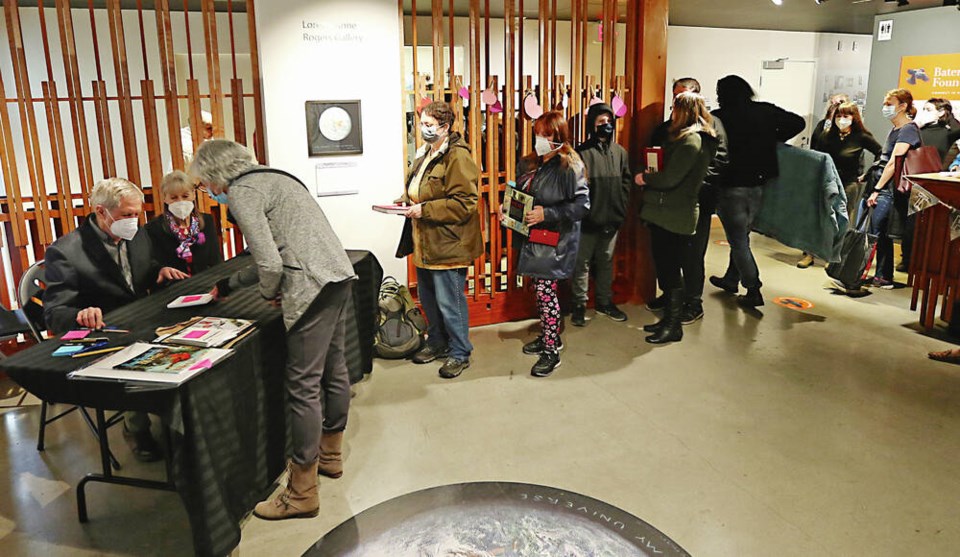A commentary by the executive director of the sa国际传媒 Museums Association.
On Feb. 18, after 10 years of supporting arts and environmental education for hundreds of thousands of locals and tourists, the Bateman Gallery closed its doors and suspended operations.
Soon, its gallery will be decamped, its artisan gift shop will be closed, its nine staff will no longer have jobs, and Victoria will lose a space that celebrated art, nature and community wellness.
On behalf of the sa国际传媒 Museums Association, our hearts go out to the amazing, award-winning team at the Bateman Gallery.
Rising operational costs, a slowdown in government funding for COVID recovery, and a slower-than-anticipated rebound in visitation rates meant that the Bateman Gallery could no longer sustain its current operations.
The closure of the Bateman Gallery is a symptom of a much larger problem and is something that anyone who cares about arts, culture, or heritage should find alarming: Museums, galleries, and heritage sites are running on fumes and this could be the first of many closures.
In Victoria, Point Ellice House Museum and Gardens made the news last summer saying that without additional funding it would need to close.
In 2020, Old Hastings Mill Store Museum avoided closure when a community crowdfunding campaign raised more than $40,000 in emergency funding.
And nearly two years after their destruction, the Lytton Chinese History Museum and the Lytton Museum and Archives have not yet started to rebuild.
These are only a handful of examples of museums facing closure; many more museums, galleries, and heritage sites are faced with rising costs and stagnant funding and fear that speaking publicly about their precarity might dissuade critically needed donations, sponsorship, and grants.
So how dire is the current outlook for museums? In a word, catastrophic.
sa国际传媒’s museum sector is facing a polycrisis of slow post-COVID visitation recovery, severe cost of living increases, stagnant government funding and the ever-worsening reality of climate disasters.
Just one of these crises would risk the health of the sector, but when combined, they are an existential threat.
Since 1997, the number of hours worked by arts, culture, and heritage workers has increased by 45 per cent, however, studies show that salaries in this sector have not kept pace with inflation, meaning that culture sector workers are working more for less.
It is little wonder that a 2017 study found that the turnover rate in the sector was 13.3 per cent, nearly double sa国际传媒’s all-industry average of 7.1 per cent, even before the unprecedented inflation of the past year exacerbated an already bad situation.
Speaking of making bad situations worse, the increasing unpredictability of the weather due to climate change threatens the aging infrastructure of museums and heritage sites across the country.
According to a 2020 national survey, 37 per cent of museums are in a building identified as in “fair” to “very poor” condition.
This means that stronger-than-average winds, heavier-than-average rain, or colder-than-average winters will increasingly compromise museums and threaten to destroy irreplaceable pieces of our collective histories — more than 70 million of which are housed in Canadian museums.
And while governments at all levels have supported cultural organizations with various COVID resilience and recovery funding, as we enter a new post-pandemic “normal,” governments are quickly returning to an untenable status quo.
At the federal level, the Department of Canadian Heritage’s Museums Assistance Program has not had a permanent funding increase since the 1970s.
At the provincial level, despite the near doubling of the sa国际传媒 Arts Council’s budget, roughly only 10 per cent of museums receive operating assistance funding and heritage sites remain ineligible for sa国际传媒 Arts Council funding.
In addition, jurisdictions like the Capital Regional District offer arts and culture funding but exclude museums and heritage organizations from applying.
If we as a society continue to underinvest in arts, culture, and heritage we will witness its death by a thousand cuts. The passionate individuals who work and volunteer in this sector are running on fumes.
Our buildings crumble. Our ceilings leak. Our collections degrade. Our current path leads in one direction, to catastrophe.
To those who decry the closing of the third floor of the Royal sa国际传媒 Museum or the removal of statues from public spaces as the destruction of history, I urge you to raise a similar alarm now.
Museums are at risk — don’t let the closing of the Bateman Gallery be a sign of things to come.
>>> To comment on this article, write a letter to the editor: [email protected]



